|
|
|
PORSCHE 911 930 CARRERA TURBO 2.1 RSR 2 MARTINI N.21 - 24H. LE MANS 1974
Drivers: KOINIGG - SCHURTI
1/18 NOREV (187425)
Year/Anno :1974
Color : Silver with Martini stripes / Argento con livrea Martini
My rating/Mio Voto : 81/100
Original price/Prezzo medio : 65 Euro
Materiale: Die-cast senza aperture/ No opening parts
Limited: 1000 units
Clicca sul banner in alto per tornare alla Homepage e visionare altri modelli.
Click on the banner on the top of this page to return at the Homepage and see all the other models of my collection.
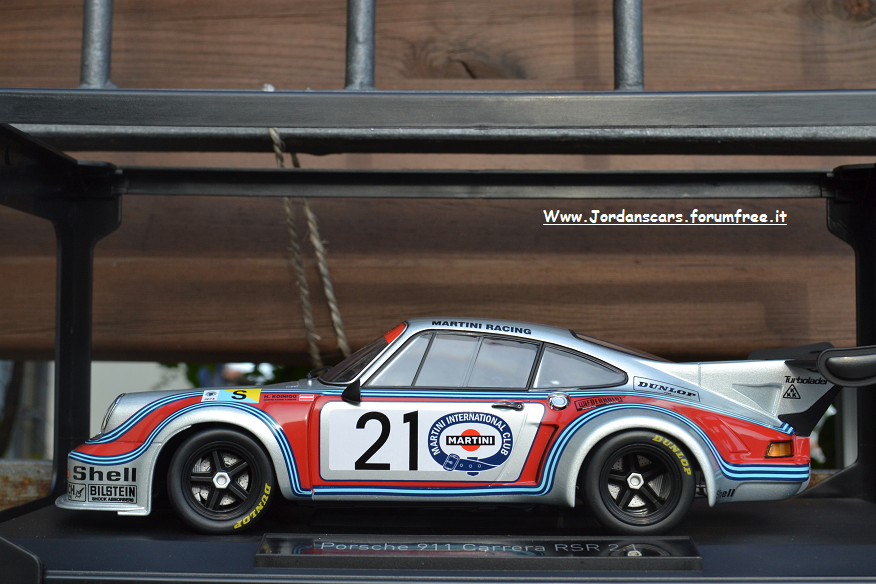
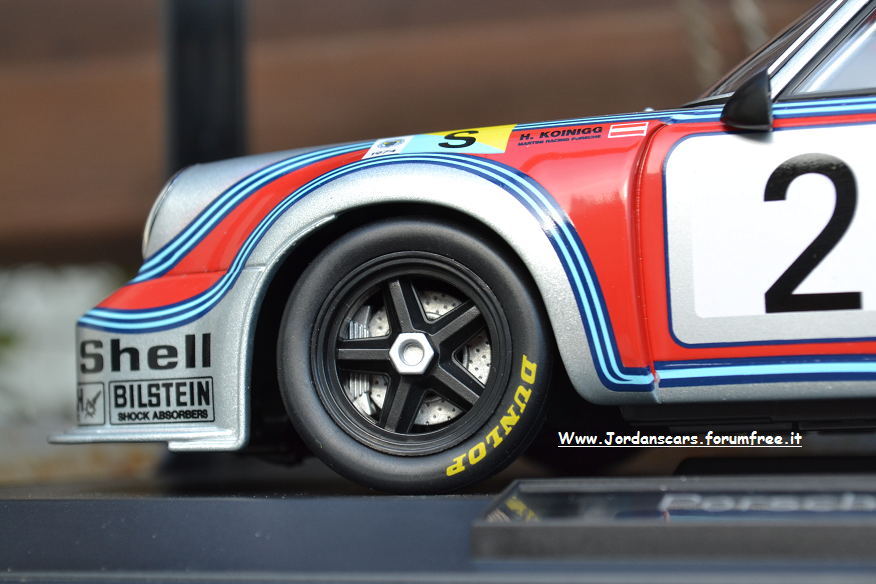
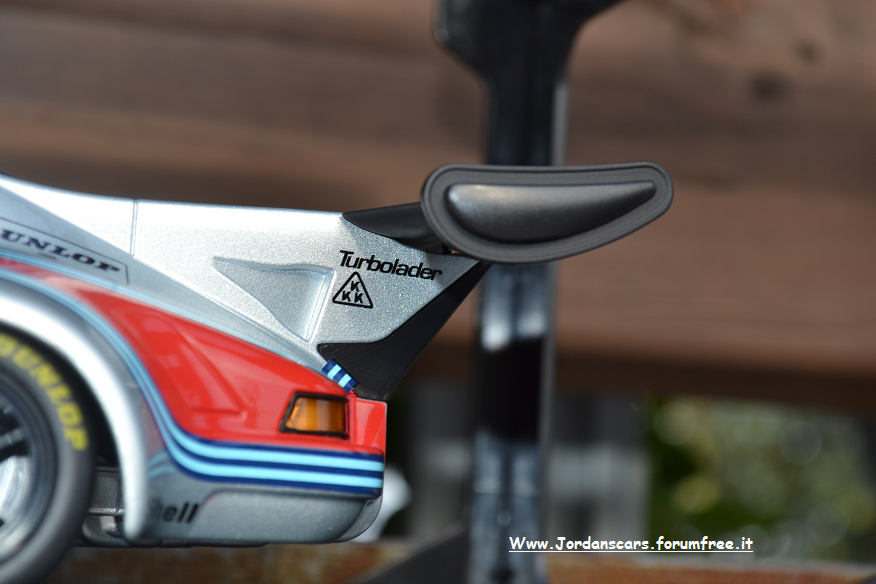
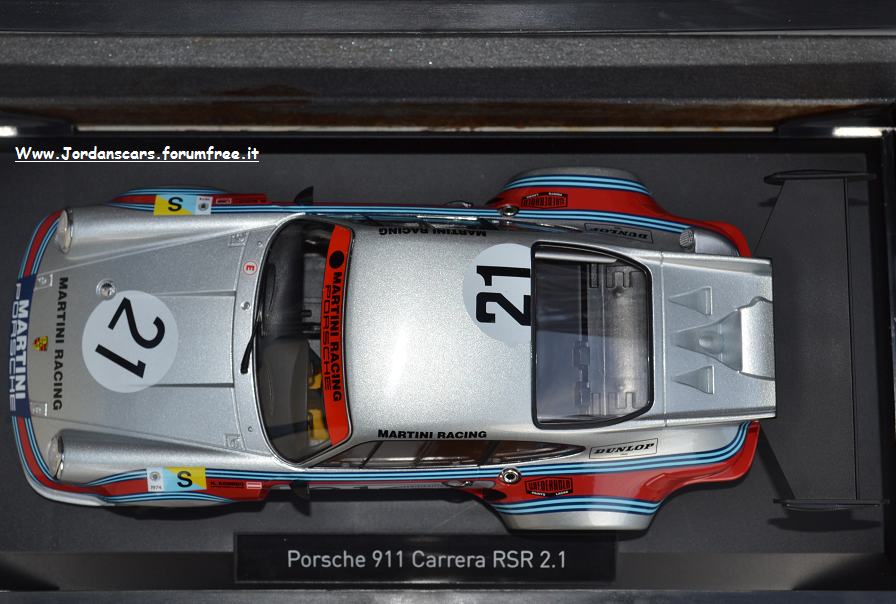
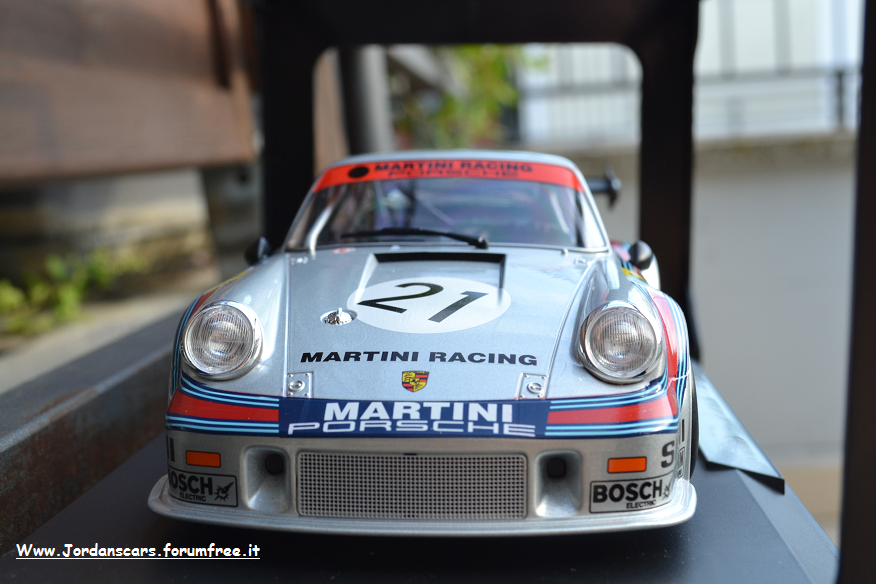
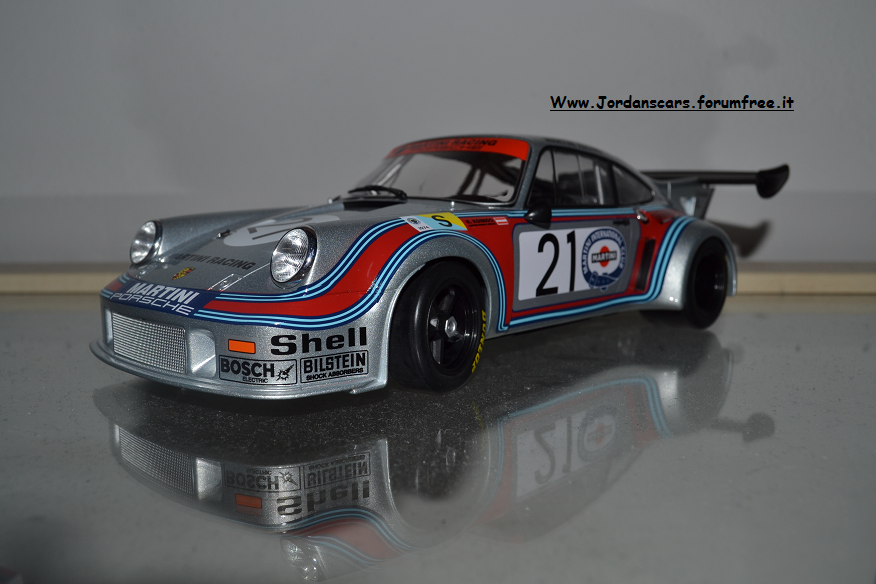
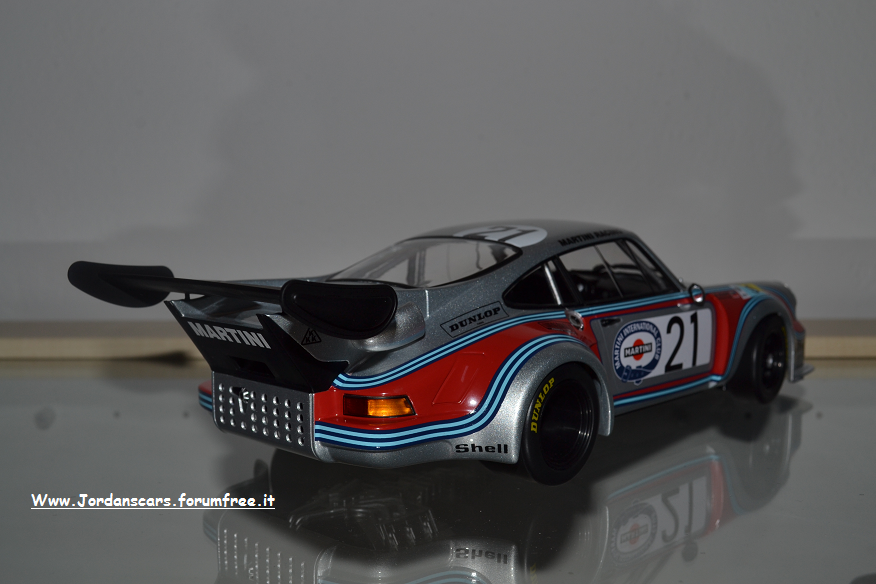
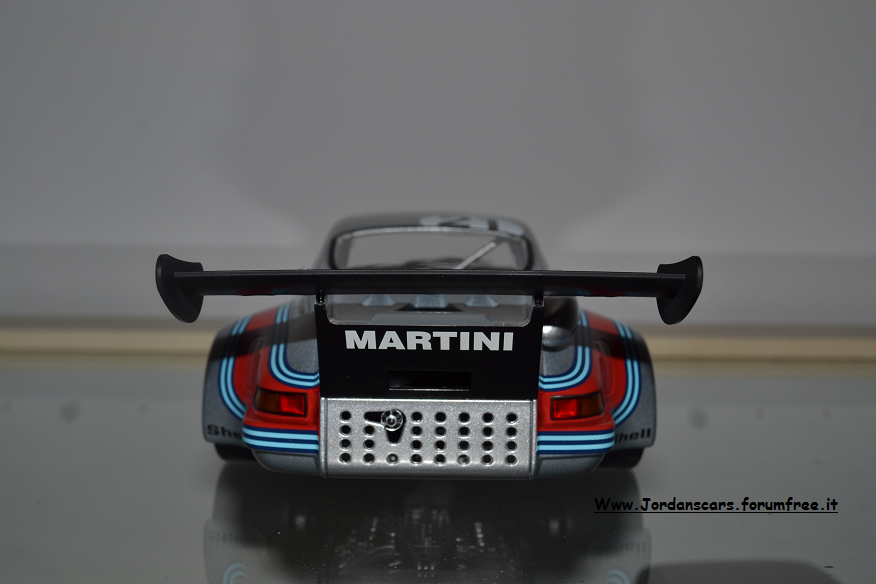
This 911 represents a sea change for Porsche, as new rules and homologation requirements in the early 1970s would limit engine displacement and require improved fuel economy. Porsche executives wanted a racer that looked much like the 911s available in showrooms, and with the production 930 — marketed as the 911 Turbo Carrera — being readied for 1975-1976 production, the RSR 2.1 would establish its legend.
Developed alongside 1973’s roadgoing Group 4 homologation-special 2.7-liter Carrera RS was the naturally aspirated 2.8-liter, 300-hp Carrera RSR racer; that RSR would be further developed into the turbocharged 1974 RSR 2.1. Famous racer and Porsche historian/author Paul Frère explained in Porsche Racing Cars of the 70s why this automaker had to limit the Group 6 racer’s displacement: “Supercharged engines of any kind used for any sort of racing, except Formula 1, were considered to have a capacity 1.4 times actual swept volume (in Formula 1 it is twice), it also meant that the engine capacity had to be reduced to no more than 2,142 cc in order to fall within the 3-liter capacity limit.”
Porsche’s racing division developed the turbocharged 2.1-liter Type 911/78 SOHC flat-six, which in its original form, made 450 hp at 8,000 rpm. This air/oil-cooled, magnesium-crankcase engine featured Bosch mechanical fuel injection and was fitted with a KKK-brand turbocharger and intercooler; as installed in the RSR 2.1, it made 500 hp at 7,600 rpm and 405 lb-ft of torque at 5,400 rpm. The engine would be paired with a five-speed transaxle sporting its own oil cooler, an 80-percent locking differential, and heavy-duty 917 racer-type half-shafts.
That mechanical package lived under a skin that, for the most part, was recognizable as a 911, although it was drastically modified from stock. The RSR would wear fiberglass fenders, doors, front and rear valances, and front and rear decklids — all engineered for weight-savings — and tubular framing supported the engine and suspension. As built, the RSR 2.1 weighed just over 1,800 pounds. It also sported widely flared fenders to cover the massive center-lock wheels (10.5-inches wide up front, 17-inches wide rear), and a huge rear wing required to keep the inherently imbalanced car (30:70-percent front/rear weight bias, despite moving the fuel tank to where the passenger seat would be!) stable at more than 190 mph.
Just four Carrera RSR 2.1 Turbos (“R5,” “R9,” “R12,” and “R13”) would be built for the 1974 racing season, and all would be factory-entered examples that sported the famous Martini Racing red and blue livery.

Photo by Mathieu Heurtault, copyright and courtesy of Gooding & Company.
RELATED MODEL CARS/ MODELLI CORRELATI:
PORSCHE 959 ---> https://jordanscars.forumfree.it/?t=73180232
|
|














